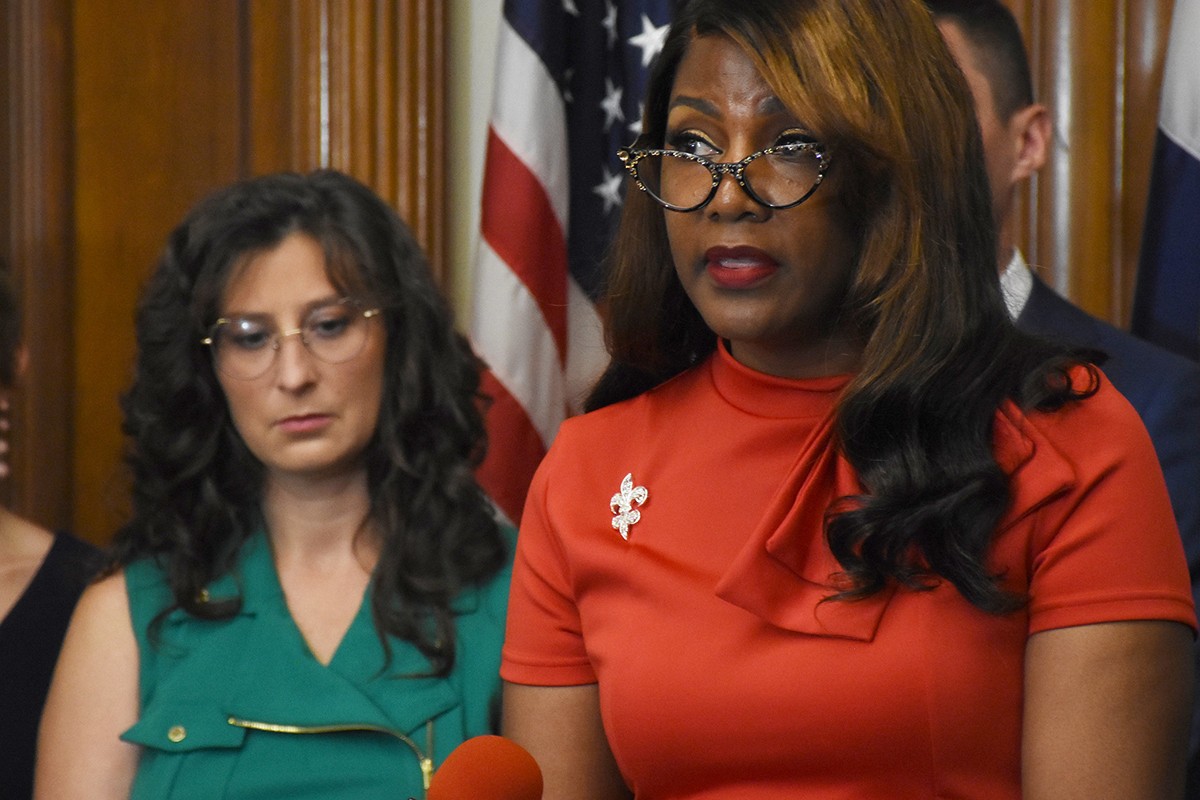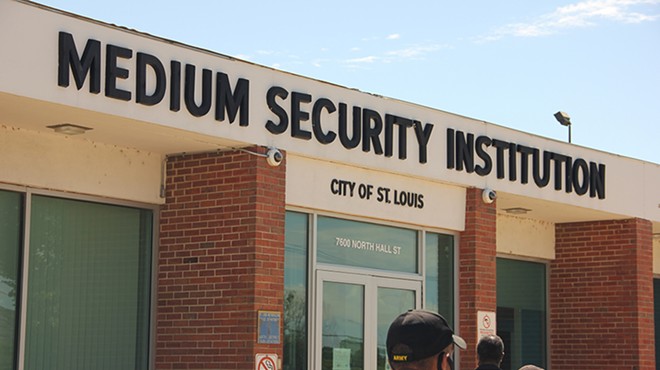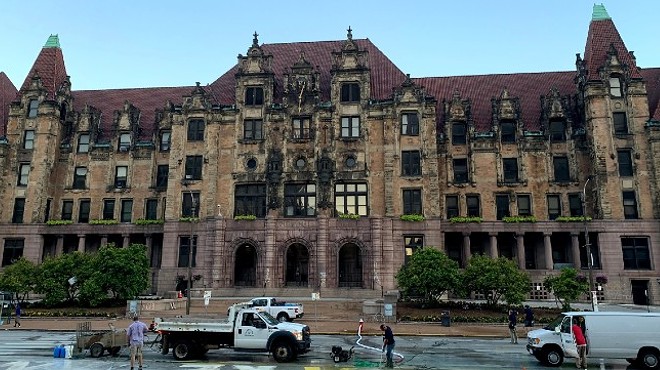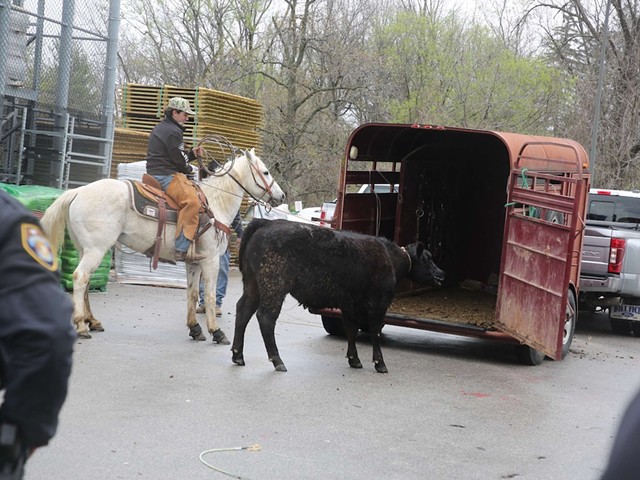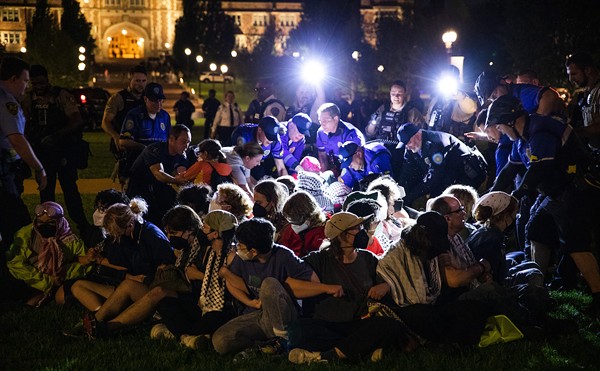For the second week in a row, activists, members of the unhoused community and service providers packed City Hall to oppose St. Louis Mayor Tishaura Jones’ idea to build tiny homes for people who need housing on the site of the city’s former jail.
The mayor has suggested the idea without officially settling on it — and it has drawn intense pushback from activists.
Last week, the public was cut off and unable to speak on the plandue to a lack of overtime funding for STL TV. This week the meeting of the board’s Public Safety Committee was scheduled an hour earlier, but still with a sharp 3 p.m. cut off, due to that same lack of funding.
This time, however, everyone who signed up to speak got their turn.
The Re-Envisioning the Workhouse report was produced by a Stakeholder Steering Committee tasked by the mayor to speak with the community about how the now shuttered Medium Security Institution, better known as the Workhouse, can be repurposed. The report includes input from more than 2,500 St. Louisans, with a special focus on people who were directly impacted by the Workhouse, who opposed the idea of using it for a shelter or affordable housing.
However even before the committee published its report, Mayor Jones was considering tiny homes for the site.
Last December,before the report was completed, Jones’ administration received the results of an environmental report it commissioned in August “specifically exploring the environmental concerns if the land were used for tiny homes,” according to information published by her office.
The report noted the presence of some toxic chemicals at elevated levels in the area, with the levels of arsenic in the soil exceeding residential standards and default target levels. It also said the lead levels exceeded the default target levels but were below residential standards and that there were high quantities of the hazardous substances Benzo(a)pyrene and Benzo(b)fluoranthene.
“Since the site is to be used for residential purposes for the unhoused, PE recommends minimizing residential exposure in the vicinity of [the affected areas] by spreading clean fill (soil or gravel) over those areas,” the report states.
The stakeholder committee, community members and activists say to place tiny homes — which they often refer to as “tiny sheds” — on the site would be dangerous and cruel.
“The building is surrounded by toxic lands, saturated in chemicals known to cause cancer and other severe health problems,” Z Gorley, communications director for ArchCity Defenders, said at today’s hearing. “The land is isolated in an industrial wasteland and is a place where many people have suffered and died.”
Jones’ office argues that it can remediate the land by placing gravel over the toxic soil. In response to concerns that the location is isolated, the mayor’s office says it would connect transportation lines to the area and provide wraparound services.
Activists say that’s not enough. They accuse the mayor of commissioning a performative report and never intended to follow its recommendations.
“The mayor plans to essentially, de facto, revert the site back to the Workhouse,” says Dominic Hussain, who works with ArchCity Defenders. “If you’re going to put people who are undesirable to you — Tishaura Jones — back where they were prior to the closure of the Workhouse, then you did not listen to the steering committee and it was all just a farce.”
Jones is considering the site as a possible tiny house location because options are limited for shelters, her spokesman Conner Kerrigan previously told RFT. City ordinances make it “near impossible” to build a shelter anywhere within city limits, Kerrigan says.
“Those ordinances were passed via board bills at the Board of Aldermen pretty much tying our hands on, standing up unhoused facilities within heavily populated areas of the city within several wards,” Kerrigan said. (More recently, the mayor’s office published an FAQ about the idea.)
Currently, Board Bill 227 is making its way through the Board of Aldermen and would make it easier to gain approval for new shelters, something that hasn’t been done in 15 years, officials say.
At least one member of St. Louis’ unhoused population is adamantly opposed to the idea.
Jameel Atkins, who was formerly held in the Workhouse and who has experienced homelessness for the past 24 years, asked the mayor to keep the Workhouse closed.
“It caused me a lot of stress being there,” Atkins says. “I think it’s unfair, I think the mayor needs to look at that and see that.”
Inez Bordeaux, who also works for ArchCity Defenders, was part of the steering committee for the Re-Envisioning the Workhouse report and was previously incarcerated there, pleaded with the Public Safety Committee through tears not to consider the mayor’s plan.
“The only people who have ever come out and said ‘we should use the Workhouse as a homeless shelter’ or ‘we should use the Workhouse for tiny homes’ are people who have never spent a single night at the Workhouse,” Bordeaux says.
Subscribe to Riverfront Times newsletters.
Follow us: Apple News | Google News | NewsBreak | Reddit | Instagram | Facebook | Twitter | Or sign up for our RSS Feed

